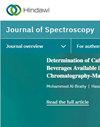加热对石灰石有机质和矿物相影响的研究
IF 2.1
4区 化学
Q4 BIOCHEMICAL RESEARCH METHODS
引用次数: 1
摘要
由于加热而引起的颜色变化可以用于确定其成分和结构的降解程度。我们在100°C到600°C的温度范围内,评估了加热对三种类型的石灰石的影响,这些石灰石分别是生物泥晶岩(BC)、生物长晶石(BS)和泥晶岩(IM),它们对建筑和修复都很有用。我们的分析表明,反射率变化最强烈的是泥晶岩样品,其次是生物泥晶,其中生物矽晶的反射率变化最小。此外,由于热处理,IM样品的有效孔隙度变化最大;相比之下,BS和BC样品显示较小的温度引起的变化与较小的反射率变化相关。此外,我们发现,在这个温度范围内,大多数热诱导的变化与针铁矿转化为赤铁矿的去羟基化以及岩石中存在的有机物的燃烧和部分释放有关。比色分析表明,热诱导变化的序列可以由CIE 1976 L∗a∗b∗空间的三个坐标L∗(亮度),a∗(红绿)和b∗(黄蓝)的演变所遵循。本文章由计算机程序翻译,如有差异,请以英文原文为准。
Study of the Effects of Heating on Organic Matter and Mineral Phases in Limestones
Color-induced changes in stones due to heating can be useful in determining the degree of degradation generated in their components and structure. We evaluate the effect of heating in three types of limestones, useful in building and restoration, corresponding to biomicrite (BC), biosparite (BS), and intramicrite (IM), in the range of temperature from 100°C to 600°C. Our analyses indicate that the strongest changes in reflectance occur in the samples of intramicrite, followed by biomicrite, being biosparite showing the smallest ones. Additionally, IM samples suffer the largest modifications in effective porosity due to the thermal treatment; in contrast, BS and BC samples show smaller temperature-induced alterations associated with smaller changes in reflectance. Moreover, we reveal that most of the thermally induced variations are associated, in this range of temperature, to the dehydroxylation of goethite that transforms into hematite, as well as by the burning and partial release of the organic matter present in the rock. Colorimetry analyses show that the sequence of thermally induced changes can be followed by the evolution of the three coordinates, L
∗
(lightness), a
∗
(red-green), and b
∗
(yellow-blue), of the CIE 1976 L
∗
a
∗
b
∗
space.
求助全文
通过发布文献求助,成功后即可免费获取论文全文。
去求助
来源期刊

Journal of Spectroscopy
BIOCHEMICAL RESEARCH METHODS-SPECTROSCOPY
CiteScore
3.00
自引率
0.00%
发文量
37
审稿时长
15 weeks
期刊介绍:
Journal of Spectroscopy (formerly titled Spectroscopy: An International Journal) is a peer-reviewed, open access journal that publishes original research articles as well as review articles in all areas of spectroscopy.
 求助内容:
求助内容: 应助结果提醒方式:
应助结果提醒方式:


